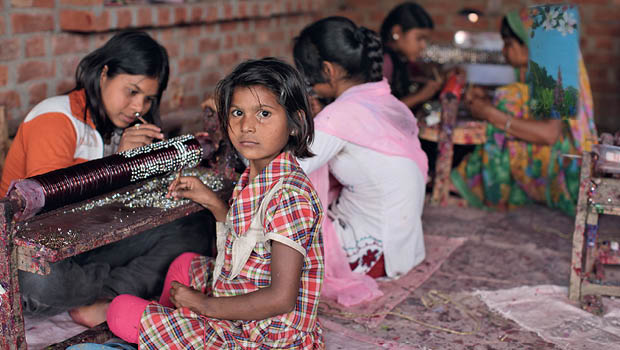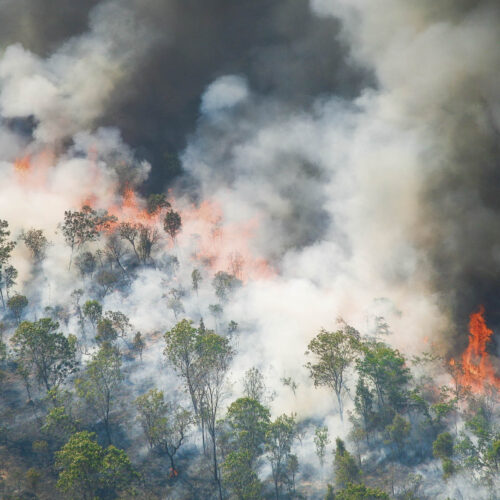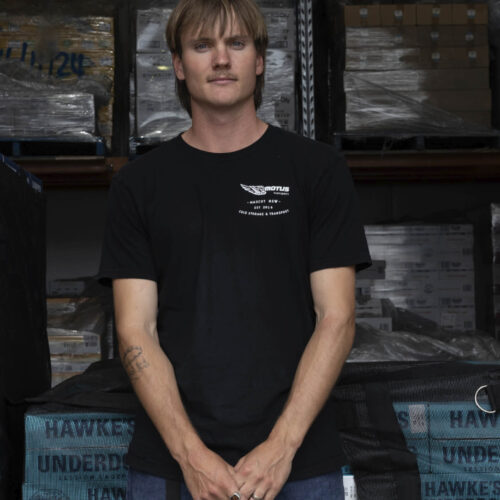Fabric of life
2017-05-29T02:06:20+10:00
The rapacious ‘fast fashion’ industry is damaging the planet. Liz Ginis speaks with leaders at the forefront of sustainable change.
If you head out clothes shopping, you’ll be struck by the sheer volume of clothes on offer, rack after rack, shop after shop, and at prices that just don’t add up: $3 shirts; $10 shorts; $15 dresses. Surely it costs more in materials to make any one of these, and what about the labour, manufacturing and import costs? The answer of course is yes – junk clothes can rarely be produced this cheaply without exploiting workers and the environment.
The creative director for sustainability firm Eco-Age, Livia Firth, is on a mission to educate consumers about the issues of cheap clothing. Firth was the executive producer on the groundbreaking 2015 film, The True Cost (truecostmovie.com), which took viewers “from the brightest runways to the darkest slums” to shine a light on the clothing industry’s global impact.
“The price of clothing has been decreasing for decades, while the human and environmental costs have grown dramatically,” says Firth.
“The world now consumes about 80 billion new pieces of clothing every year. This is 400 per cent more than the amount we consumed just two decades ago.” Firth says that as new clothing comes into our lives, we also discard it at a shocking pace, with hundreds of millions of tonnes of textiles discarded annually around the world.
“Historically, clothing has been something we have held onto for a long time, however with cheap clothing now abundantly available we are beginning to see the things we wear as disposable.”
Big industry, big change
The global apparel market – largely based on the avaricious fast-fashion model – is now valued at 3 trillion dollars ($3000 billion), and accounting for 2 per cent of the world’s Gross Domestic Product (GDP)*. How can such a monolith be changed?
Safia Minney, MBE, author and founder of Fair Trade label People Tree, explores the issues in her latest book, Slow Fashion – Aesthetics Meets Ethics, which takes a 360 degree look at the fashion world, from the cotton fields to the cities.
“The way the Western world – and increasingly, developing nations such as China and India – lives and consumes is destroying the planet. We are already consuming 1.5 times our planet’s resources, hurtling towards an unsustainable future,” writes Minney.
“The fashion industry has a key role to play in the sustainable revolution. How? By reducing the amount of water, land and energy used to grow, produce and transport fibres for the manufacture of clothes; by ensuring that the workers who make the clothes are paid enough to provide a livelihood; and by guaranteeing working and living conditions that help develop these communities.
“The fast-fashion industry needs to move away from ever-changing trends; consumers need to find inspiration and pleasure in the texture of natural fabrics, the story behind the product and real, honest ‘face-to-face’ communication with the people selling them their clothes. These are the challenges for the next decade.”
Ethical example
Facing these challenges head on is Amy Roberts, founder and head designer of Melbourne-based eco-label Vege Threads. She is one of a new breed of designers wanting, and working, to change the paradigm.
With just a handful of years under her belt in the industry, she’s committed to ‘fighting the good fight’ when it comes to using only ethically sourced, sustainably made, organic materials.
“I started out with a capsule collection of clothes made from GOTS (Global Organic Textile Standard) certified organic cotton and vegetable dyes, and sewn by women in Indonesia,” Roberts says. “Because Australian manufacturers work with high minimums (I wanted to make 10 pieces, they needed 100) I had to go offshore to find someone who could cater for that. Now, my manufacture is 100 per cent onshore, in Australia, which is really important to me – so I know that the people making my clothes are well supported. With the help of ECA [Ethical Clothing Australia] I have been able to source suppliers that tick all my boxes – like ethical work practices and occupational health and safety conditions – in the cut, make and trim of my garments.”
Roberts is now looking at her sustainability practices from ‘seed to garment’, in particular closing the loop during fabric dyeing. “Dyeing uses a lot of water. Afterwards the water is ‘cleaned’ and can then be redistributed to crops. It is sustainable, which is vital to environmental health, to me, and ultimately, to all of us.”
Beyond clothes
It is not just about clothes though. The whole textile industry needs an ethical and environmental revolution. The owners of Blessed Earth, one of Australia’s first organic clothing, manchester and bedding companies, echo Amy’s thoughts on sustainability.
Established in 2004, the business was founded on the belief that people shouldn’t wear clothing or use textiles infused with chemicals. While they originally sourced their cotton in Egypt, it is now grown, processed and manufactured in India.
‘There hasn’t been an organic cotton crop in Australia since 2005,” says owner Rai Handiman. “Firstly, it’s not suitable for our landscape [it’s too water intensive for our largely arid land]. Also it’s not grown here because an organic crop requires very different farming practice to non-organic. For instance, here we use big machinery and insecticides to remove pests, whereas in India they use people power for pests such as boll weevil; workers install special little traps designed to remove the insects and not damage the cotton boll.
“Largely, as a race, we have lost connection with our planet. In using cotton that retains its coding – meaning it is as close to it’s original structure as possible, worked by hand and without chemical intervention – we hope to help re-establish that bond for the users of our products.”
Wear to from here?
Annie Thompson has had what some might call a mid-life rebirth. Two years ago the communications expert changed tack, diving into the world of organic clothing – selling school uniforms from home and online (myorganicuniform.com.au).
In early 2016 she attended the Copenhagen Fashion Summit. “It was all about recycling, reuse, new materials, longevity,” Thompson says. “And all sorts of innovations – such as making fabric from banana, pineapple, coconut and milk! Just imagine how that could help our struggling Australian dairy farmers.
“And imagine if we could make organic cotton uniforms for school children mainstream… no petrochemicals on kids’ skin or in landfill [when uniforms are tossed away]. And what if we closed the loop, recycling uniforms into library bags, which could be given as a gift to every new kindergarten child coming into a school, rather than throwing them away?
This could drive huge change.”
The true price of fast fashion
- Globally, 80 billion items of clothing leave factories every year – that’s 400 per cent more than the amount we consumed just 20 years ago.
- 73 million tonnes of clothing are thrown away, every day.
- 20 per cent of industrial water pollution comes from textile dyeing.
- Cotton is the world’s most commonly used natural fibre and is in nearly 40 per cent of our clothing. More than 90 per cent of that cotton is now genetically modified, using vast amounts of water. It is also one of the most chemically dependent crops in the world.
- While only 2.5 per cent of the world’s cropland is planted with cotton, it consumes 12 per cent of all agricultural chemicals and 25 per cent of insecticides.
- Over 2700 litres of water are used in the manufacture of just one t-shirt.
- The carbon footprint of a T-shirt is 20 times its actual weight.
The role of people power
As global citizens we can collectively drive change for a more sustainable, ethical and organic future when it comes to the clothes and products we buy. Here’s how:
- Choose natural, chemical-free fibres
- Steer clear of cheap, plastic fashion
- Buy less, choose well, make it last
- Shop second hand
- Recycle (only 20 per cent of clothing is recycled globally), re-purpose and re-use older items to create ‘new’ pieces for our wardrobes, or take part in clothes swaps with friends.
To find out how you can make your voice heard visit greenpeace.org/detox
*Source: Fashion United, fashionunited.com/global-fashion-industry-statistics
This article first appeared in the January/February 2017 issue of Organic Gardener magazine.






